Best Nonfiction Books of All Time
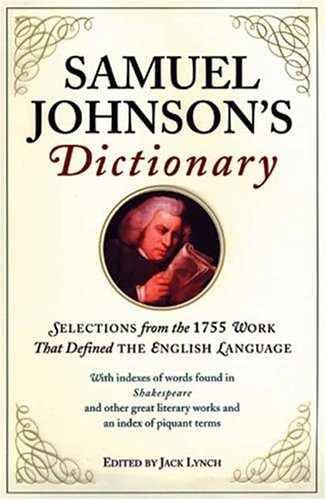
<1 min read ⌚
Naturally, our first idea for our final list – best nonfiction books of all time – was making “a best of the best” list. After all, we already made for you no less than 16 lists, and choosing the best book of each of them would have been a perfect finale to our wonderful list-making journey of the past year.
(Which, by the way, we hope you enjoyed it at least as much as us.)
However, halfway down making such a list, we realized that there were so many great books we didn’t have a chance to include anywhere else. So, we decided to make a U-turn! Instead of compiling books from our lists, we decided that each of our top nonfiction books should be a unique entry.
Yes, that meant that this list would be bereaved of many highly deserving classics. From the top of our heads: “The Diary of a Young Girl”, “Night” or “I Know Why the Caged Bird Sings” (top biographies), “Civilization and Its Discontent” (top psychology books), “Capitalism and Freedom” and “The General Theory of Employment, Interest, And Money” (top economics choices) or half of our top history books.
But, it also meant that we’ll provide you with 15 more reviews of 15 more exceptional books by 15 more exceptional people. Although, we would have wanted to include at least as many even here.
Enjoy!
#1. “A Dictionary of the English Language” by Samuel Johnson
 Contrary to popular belief, this is not the first dictionary of the English language. However, it is certainly both the most influential and the most admirable one. As Walter Jackson Bate wrote, Samuel Johnson’s “Dictionary” “easily ranks as one of the greatest single achievements of scholarship, and probably the greatest ever.”
Contrary to popular belief, this is not the first dictionary of the English language. However, it is certainly both the most influential and the most admirable one. As Walter Jackson Bate wrote, Samuel Johnson’s “Dictionary” “easily ranks as one of the greatest single achievements of scholarship, and probably the greatest ever.”
No, this is not a biased opinion! And a simple comparison may be the only argument you’ll ever need to read as evidence.
Namely, the Académie française took 55 years and the dedication of 40 scholars to complete their Dictionnarre; it included about 30,000 words. Samuel Johnson spent 8 years to compile a list of 40,000 words. And all were thoroughly defined and meticulously illustrated with over 114,000 quotations!
And he did it all – by himself!
There’s nothing even remotely similar to Johnson’s endeavor in all of human history! His dictionary was so good that was unanimously considered the preeminent work of its kind for almost a century and a half, until the “Oxford English Dictionary” came out.
Bonus: some of the definitions in the dictionary are really funny! Such as “Lexicographer: a writer of dictionaries; a harmless drudge that busies himself in tracing the original and detailing the signification of words.”
#2. “Critique of Pure Reason” by Immanuel Kant
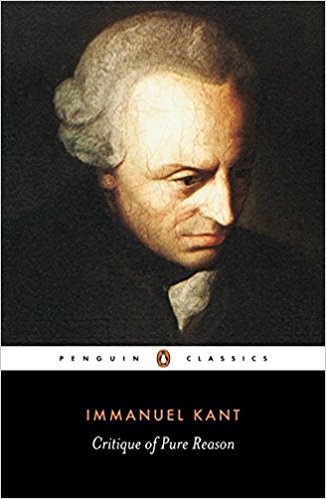 Barely thirty years after Samuel Johnson transformed the way people think about the English language, German philosopher Immanuel Kant transformed the way people think about – well, anything. A miraculous achievement, considering the fact that Kant almost never left his hometown, the city of Königsberg (now Kaliningrad).
Barely thirty years after Samuel Johnson transformed the way people think about the English language, German philosopher Immanuel Kant transformed the way people think about – well, anything. A miraculous achievement, considering the fact that Kant almost never left his hometown, the city of Königsberg (now Kaliningrad).
First published in 1781 – before being revised six years later – “Critique of Pure Reason” attempts to give an answer to the question “how do we know.” A question as old as time, you might say, but a question with so many answers before Kant as well.
Kant didn’t like this, so he tried to explain away the confusion and put an end to all speculation once and for all. However, he didn’t want to resort to some easy answers, such as the skepticism of René Descartes and David Hume. So, he went on to develop about a thousand-page long theory of the relationships between pure reason and human experiences.
And, magnificently, philosophers worldwide agree that he did quite a good job. Although, to be perfectly honest, some time passed before anyone understood what Kant was saying.
Bear that in mind if you ever want to leaf through its pages. You’ll definitely need some help.
#3. “The Communist Manifesto” by Karl Marx and Friedrich Engels
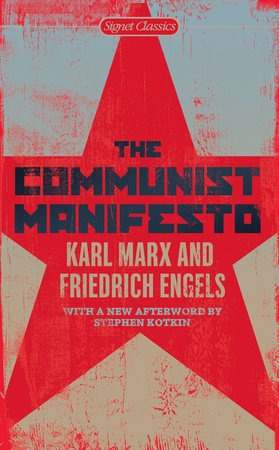 1848 was one of the most tumultuous years in human history. Revolutions broke in over 50 countries around the planet, and almost each and every one in Europe. Objective historians have rightly dubbed 1848 as the Year of Revolution. The more hopeful ones have opted for a more poetic title: People’s Spring.
1848 was one of the most tumultuous years in human history. Revolutions broke in over 50 countries around the planet, and almost each and every one in Europe. Objective historians have rightly dubbed 1848 as the Year of Revolution. The more hopeful ones have opted for a more poetic title: People’s Spring.
Well, a month before the actual commencement of that year’s spring (February 21, 1848), Karl Marx and Friedrich Engels published a very brief political pamphlet which would go on to change the course of human history.
Widely considered the most influential text of its kind in history, the three-part “Communist Manifesto” is a summary of Marx and Engels’ ideas about the nature of society and politics.
The first part, “Bourgeois and Proletarians,” states from the outset the main premise: “history of all hitherto existing society is the history of class struggles.” The second part, “”Proletarians and Communists,” lists and explains the measures necessary to achieve a classless society. Finally, the third part “Socialist and Communist Literature,” sets apart communism from other similar doctrines.
Some love it; others despise it. Nevertheless, the ideas presented in “The Communist Manifesto” have been hotly debated ever since its publication.
And will be – for any foreseeable future.
#4. “Walden; or, Life in the Woods” by Henry David Thoreau
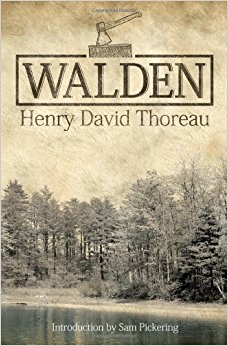 In 1845, Henry David Thoreau – then merely 28 years of age – left behind the materialist America of his time to live a life of seclusion and solitude in Ralph Waldo Emerson’s country cabin near Walden Pond, near Concord, Massachusetts.
In 1845, Henry David Thoreau – then merely 28 years of age – left behind the materialist America of his time to live a life of seclusion and solitude in Ralph Waldo Emerson’s country cabin near Walden Pond, near Concord, Massachusetts.
He stayed there for two years, two months and two days. And nine years later, he gave the world his account of his experiences, “Walden,” a book so influential that, as John Updike noted it “risks being as revered and unread as the Bible.”
If you’ve ever watched “Dead Poets Society,” you probably already know its (a bit jumbled-up, though) introduction by heart: “I went to the woods because I wished to live deliberately, to front only the essential facts of life, and see if I could not learn what it had to teach, and not, when I came to die, discover that I had not lived.”
What you may not know, however, is that “Walden” is the most radical way in which Thoreau tried to practice his ideas of civil disobedience. Expounded more thoroughly in another essay of his, the concept – and “Walden” – would influence figures as diverse as Tolstoy, Gandhi, and Martin Luther King, Jr.
A book for all the ideologists out there. For all times.
#5. “On Liberty” by John Stuart Mill
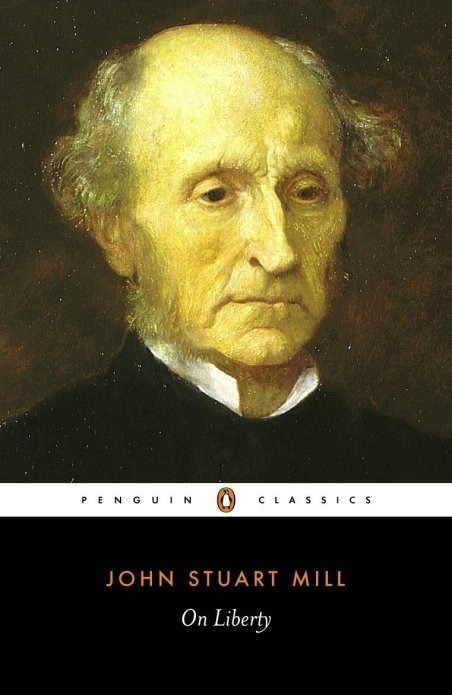 John Stuart Mill was raised to be a genius; so, he became one of the greatest of his, or, for that matter, all times. He contributed to so many areas of human knowledge that he is often considered to have been “the most influential English-speaking philosopher of the nineteenth century.”
John Stuart Mill was raised to be a genius; so, he became one of the greatest of his, or, for that matter, all times. He contributed to so many areas of human knowledge that he is often considered to have been “the most influential English-speaking philosopher of the nineteenth century.”
However, his short book titled “On Liberty” seems to have stood the test of time like no other of his books. It’s still widely read and widely commented. A copy of the book, for example, is regularly passed to the new president of The British Liberal Democrats and the Liberal Party as a symbol of his office.
Written as an attempt to apply Mill’s favored philosophical doctrine (utilitarianism) to the state and society in general, “On Liberty” analyzes the relationship between governments and individuals, and between authority and freedom. It tries to uncover where one’s freedom ends and where someone else’s begins. And, finally, it tries to show how we can remain democratic without falling victims to an unexpected “tyranny of the majority.”
Just like any of the books on this list, “On Liberty” has been as much lauded as it has been criticized. However, just like them, it’s also still thought-provoking and debated. A testament to its greatness.
#6. “On the Origin of Species” by Charles Darwin
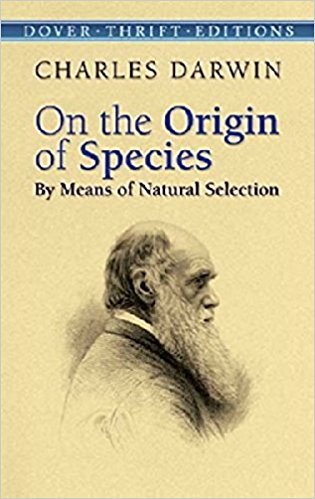 The same year Mill published “On Liberty,” one man published a book which will largely overshadow its significance. A book which – some may argue – has overshadowed almost every single nonfiction book ever written, bar one or two it rubs its shoulders with at the peak of the pedestal.
The same year Mill published “On Liberty,” one man published a book which will largely overshadow its significance. A book which – some may argue – has overshadowed almost every single nonfiction book ever written, bar one or two it rubs its shoulders with at the peak of the pedestal.
The full title of the book: “On the Origin of Species by Means of Natural Selection, or the Preservation of Favoured Races in the Struggle for Life.” You already know the author: Charles Darwin.
Written for the general public – so as to attract more attention – “On the Origin of Species” argued something nobody had ever dared before. Namely, that living organisms have a common ancestor and that their diversity is the result of random selection.
No gods, no divine will. Merely Mother Nature, in all its haphazard glory.
It’s practically impossible to overestimate the effects Darwin’s theory would have on every living person. And when twelve years later Darwin would apply the theory of evolution he devised here to humans, the circle would be completed.
Because “The Descent of Man, and Selection in Relation to Sex” would be the first book to argue that humans are not an exceptional species.
And that – there’s so much humbleness and beauty in this finding.
#7. “Tractatus Logico-Philosophicus” by Ludwig Wittgenstein
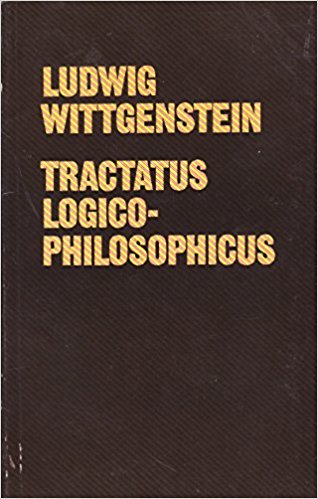 Austrian-British philosopher Ludwig Wittgenstein was such a colorful person that a short biography would do no justice to either his life or his larger-than-life personality. For now, suffice to say that he is considered to have been “the most perfect example… of genius” even though he published just one fairly slim book during the 62 years he was given to live and think on this planet.
Austrian-British philosopher Ludwig Wittgenstein was such a colorful person that a short biography would do no justice to either his life or his larger-than-life personality. For now, suffice to say that he is considered to have been “the most perfect example… of genius” even though he published just one fairly slim book during the 62 years he was given to live and think on this planet.
And that volume is “Tractatus Logico-Philosophicus” – in all of its 80 pages and 526 numbered statements.
Written during the period of the First World War, the “Tractatus” is comprised of no more than seven main propositions, each as seemingly comprehensible as thoroughly inscrutable as the next one.
Want to have a go?
Here is the first one: “the world is everything that is the case;” it’s followed by seven sub-propositions which may help you understand it; or not. Either way, they won’t prepare you for the second one: “What is the case (a fact) is the existence of states of affairs.” Cue 79 apparently elucidating statements. (Click here for the whole structure.)
Now, you’re probably wondering how then the “Tractatus” ended up being on our list?
Well, because almost every single sentence of it has been scrutinized and/or challenged by almost any thinker who matters. Not the least – by Wittgenstein himself. A bit strange if you take into consideration that, at the time he published it, he claimed, in a Kantian manner, that the “Tractatus” had solved all philosophical problems.
Even stranger in view of the last – and by far most famous – of his seven propositions. This one’s a beauty: “Whereof one cannot speak, thereof one must be silent.”
#8. “A Room of One’s Own” by Virginia Woolf
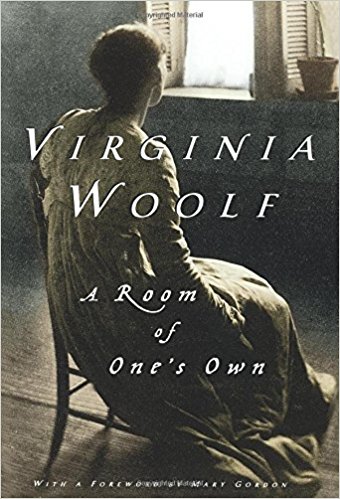 It was precisely something many had remained silent about that an English modernist writer by the name of Virginia Woolf wanted to speak about in 1929. And in “A Room of One’s Own” she did. In her familiar exuberantly fluid, and sumptuously beautiful prose. A lifetime interest for her – style – wasn’t as important this time around.
It was precisely something many had remained silent about that an English modernist writer by the name of Virginia Woolf wanted to speak about in 1929. And in “A Room of One’s Own” she did. In her familiar exuberantly fluid, and sumptuously beautiful prose. A lifetime interest for her – style – wasn’t as important this time around.
It was what she wanted to convey through it. A message which echoed through time and space. It isn’t just to her talent to summarize it in a sentence, but, since it’s hers, will be unjust. “A woman must have money and a room of her own if she is to write fiction.”
As axiomatic as it may sound nowadays, when Woolf wrote it, it was both frowned upon and as radical as a political manifesto.
However – and fortunately – it set the foundation for feminism; and, through it, for women’s rights. Because Woolf was the first one to ask the right question. It’s not “why have there been no talented women artists and scientists up to the nineteenth century”; it’s: “why no talented women artists and scientists ever got the chance to employ their talents?”
We already quoted her fairly straightforward answer above.
#9. “The Hero with a Thousand Faces” by Joseph Campbell
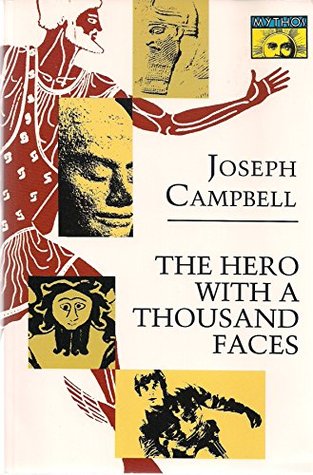 When it was published in 1949, “The Hero with a Thousand Faces” was one of the most thorough analyses of how similarly world mythologies have shaped the stories of their heroes’ journey to greatness. In the meantime, it has also become a sort of a manual for creating long-lasting works of art.
When it was published in 1949, “The Hero with a Thousand Faces” was one of the most thorough analyses of how similarly world mythologies have shaped the stories of their heroes’ journey to greatness. In the meantime, it has also become a sort of a manual for creating long-lasting works of art.
You probably don’t know it, but whether it’s “Star Wars” or “Harry Potter,” “Watership Down” or “Beauty and the Beast” – they all consciously owe their structure to Joseph Campbell’s investigations and his idea of the monomyth. Borrowed from Joyce, Campbell uses this word to speak about the fundamental architecture of the archetypal hero’s journey. And he summarizes thus:
“A hero ventures forth from the world of common day into a region of supernatural wonder; fabulous forces are there encountered and a decisive victory is won; the hero comes back from this mysterious adventure with the power to bestow boons on his fellow man.”
Of course, there are many episodes interspersed with this narrative, but, even those are shared throughout cultures. Why? Because we’re all humans and because some stories are buried deep within our subconscious.
“The Hero with a Thousand Faces” strives to uncover the arche-stories. While warning us that if we ever forget them, we’ll forget being humans as well.
Like this summary? We’d like to invite you to download our free 12 min app, for more amazing summaries and audiobooks.
#10. “The Feminine Mystique” by Betty Friedan
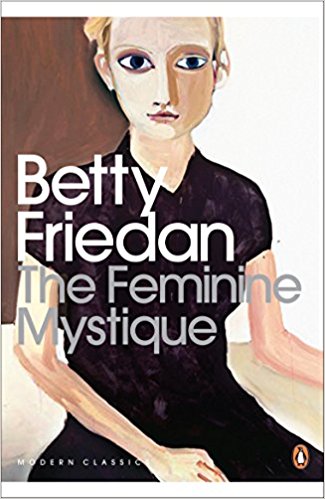 Virginia Woolf may have been the first one to remind women that they are as much as humans as men. However, Betty Friedan was the author who really shook women to their core, waking them from centuries of stony sleep. And showing them the way to a world where women can be equal to men.
Virginia Woolf may have been the first one to remind women that they are as much as humans as men. However, Betty Friedan was the author who really shook women to their core, waking them from centuries of stony sleep. And showing them the way to a world where women can be equal to men.
Published in 1963, “The Feminine Mystique” is widely considered to have been the book which launched second-wave feminism. It was originally intended to be an article about the results of a survey Friedan conducted of her former Smith College classmates on their 15th-anniversary reunion. But, nobody wanted to publish the article. So, Friedan authored a whole book.
As she famously put it herself, about “the problem that has no name.”
You see, what Friedan discovered is that most of her friends were unhappy. Contrary to popular belief, what made them unhappy was the fact that they were expected to be wives and mothers.
And – herein lies the nameless problem – nothing more.
And each suburban wife, wrote Friedan, struggled with this problem alone. “As she made the beds, shopped for groceries… she was afraid to ask even of herself the silent question — ‘Is this all’?”
Friedan was sure it couldn’t be. And she gave voice to all the women who shared her feelings.
And the world changed.
#11. “Eichmann in Jerusalem: A Report on the Banality of Evil” by Hannah Arendt
 A Jew who left Germany soon after Adolf Hitler’s rose to power, Hannah Arendt is considered one of the most significant modern political philosophers. So influential is she that – as many would argue – the book we’ve chosen for our list isn’t the one she’s most famous for. That one is, in fact, “The Origins of Totalitarianism” where she carefully examines the roots of Nazism and Communism.
A Jew who left Germany soon after Adolf Hitler’s rose to power, Hannah Arendt is considered one of the most significant modern political philosophers. So influential is she that – as many would argue – the book we’ve chosen for our list isn’t the one she’s most famous for. That one is, in fact, “The Origins of Totalitarianism” where she carefully examines the roots of Nazism and Communism.
However, we went here with “Eichmann in Jerusalem,” a book smaller both in length and in scope; but, in our opinion, also a book whose conclusions are much more related to the human nature and, thus, much more relevant and frightening.
Based on Arendt’s “New Yorker” reports about the 1961 trial of Adolf Eichmann, the book famously argues that Eichmann, one of the organizers of the Holocaust, was not a gruesome monster, but merely averagely intelligent “joiner.”
Or, in other, much more worrisome words, a person just like anybody else. He boasted of no exceptional intelligence or hatred, and he wanted to belong to some community.
But therein lies the rub: it was exactly because of people like him that the Holocaust was made possible. Evil has no movie-like qualities, and you can’t really detect it the way you can detect a serial killer in a slasher movie.
As Arendt famously said, evil is banal. And almost anyone, under the right circumstances, can become its agent.
#12. “Orientalism” by Edward Said
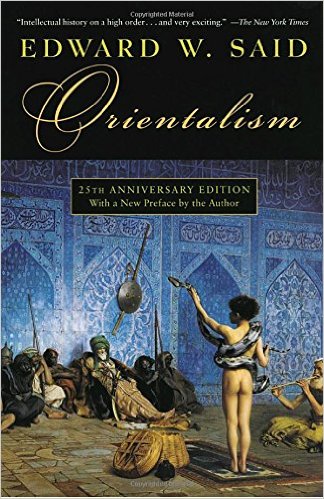 All humans belong to the same species. However, it seems that cultural differences have created chasms between them. Only recently we started understanding the greatest one, the West/East schism.
All humans belong to the same species. However, it seems that cultural differences have created chasms between them. Only recently we started understanding the greatest one, the West/East schism.
And it couldn’t have been written by anyone else other than Edward Wadie Said, a public intellectual born in Jerusalem to a Palestinian father and Lebanese mother, and raised and educated in Cairo at a British Anglican Christian school. All in all, by his own admission, “an uncomfortably anomalous student.”
But, “Orientalism” stemmed out of this discomfort. It strives to describe the cultural representations of some Eastern cultures (Asia, North Africa, Middle East) in the works of the authors who belong to the Western literary canon.
The results themselves are nothings short of expected. Predictably, Western writers never saw the inhabitants of these places as people of real flesh and blood, but as underdeveloped caricatures residing in an exotic world of myths and legends.
However, the consequences are far-reaching. According to Said, in time, the ruling elites in these Eastern societies realized that they could use these stories to exert authority and influence over their subjects. So, they internalized the Western narratives – and actually started turning into what they were wrongly portrayed to have been.
So, “Orientalism” is not only about culture and literature. It’s also about power and freedom.
#13. “The Double Helix: A Personal Account of the Discovery of the Structure of DNA” by James D. Watson
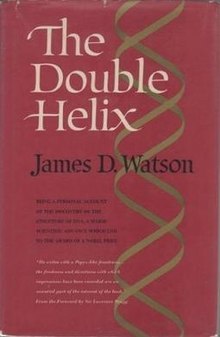 There are not many events in modern history that can compare – both in terms of instant impressions and eternal effects – to the publication of a single two-page article in the 171st volume of the scientific journal “Nature” on 25 April 1953.
There are not many events in modern history that can compare – both in terms of instant impressions and eternal effects – to the publication of a single two-page article in the 171st volume of the scientific journal “Nature” on 25 April 1953.
Titled “Molecular Structure of Nucleic Acids: A Structure for Deoxyribose Nucleic Acid” and signed by Francis Crick and James D. Watson, the article has been variously described as a scientific “pearl” and as “the most important scientific discovery of the 20th century.”
Could it be any different?
What the article first described was the double helix structure of the DNA. Or, to put it in laymen’s terms – there, on these two pages, lay the answer to one of science’s fundamental mysteries.
The origin of life.
Fifteen years later, one of these two scientists, James Watson, wrote “The Double Helix”. An intimate autobiographical account of the discovery of DNA, “The Double Helix” was voted the 7th best nonfiction book of the 20th century by the Modern Library, and was placed on Library of Congress’ list of the 88 “Books That Shaped America.”
Important and immensely popular, the book has inspired a fair share of controversies as well. Which, of course, makes the book even more appealing.
#14. “A Brief History of Time: From the Big Bang to Black Holes” by Stephen Hawking
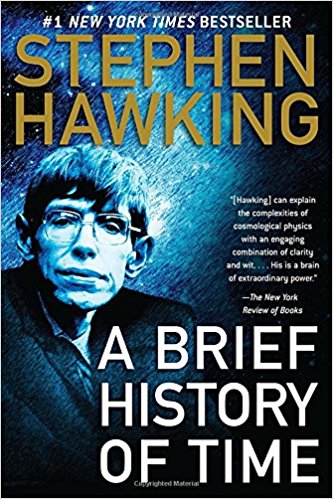 We really wanted to include a book by Einstein or Newton in our list; however, we opted for Stephen Hawking. And that already says a lot about how much we value the British physicist and his most celebrated book.
We really wanted to include a book by Einstein or Newton in our list; however, we opted for Stephen Hawking. And that already says a lot about how much we value the British physicist and his most celebrated book.
However, the reason why we preferred Hawking to Einstein or Newton is a blatantly obvious one. Namely, during the past two decades, “A Brief History of Time” has sold more than 10 million copies. You can’t say that about many books – let alone scientific treatises.
Because, even though it’s bereaved of the technical jargon associated with similar books, “A Brief History of Time” is still a serious study about serious matters. Such that go even beyond the questions answered by the discovery of DNA.
In it, Hawking writes about the origins and the eventual death of our universe; about concepts such as the Big Bang, time-space continuum, quarks and gravity; and, finally, he discusses two different theories which try to explain the existence of the universe – Einstein’s theory of general relativity and quantum physics.
Nobody has ever succeeded in bringing the world of cosmology and astrophysics as close to the general public as Hawking. And, unsurprisingly, in 2002 BBC poll, he was voted the 25th Greatest Briton of all time.
#15. “The Sixth Extinction: An Unnatural History” by Elizabeth Kolbert
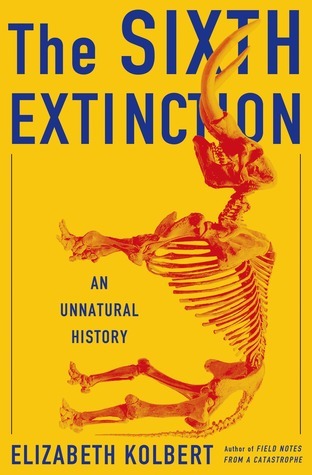 The most recent entry on our list is one we felt we had to include in spite of it being published in 2014. Because we want you to take its subject matter as seriously as a heart attack. And because, in a way, “The Sixth Extinction” by Elizabeth Kolbert talks about some things which, if you don’t, there will be no writers left to write, and no readers to compile lists like this.
The most recent entry on our list is one we felt we had to include in spite of it being published in 2014. Because we want you to take its subject matter as seriously as a heart attack. And because, in a way, “The Sixth Extinction” by Elizabeth Kolbert talks about some things which, if you don’t, there will be no writers left to write, and no readers to compile lists like this.
A winner of the 2015 Pulitzer Prize for General Non-Fiction, “The Sixth Extinction” argues that we are currently in the middle of a modern extinction process. However, unlike the previous five, this one’s man-made. Consequently, it’s also preventable.
However, the extinction will probably not be prevented, because, as Kolbert shows, humans are in a state of absolute denial. She compares this denialism to the one pre-Darwinian people had in view of prehistoric mass extinction. Most of them simply didn’t believe that any event could be powerful enough to wipe down a whole species from this planet.
Now, we know for sure that they were wrong. Unfortunately, we have invested enormous amounts of energy to – well, repeat it.
The result? Kolbert demonstrates that, if our estimates are correct, almost half “of all living species on earth” may be extinct by the end of 21st century.
Bleak? In need of immediate action?
Well, that’s what books can do.
And why we need lists like this one to guide us through the libraries of history.








